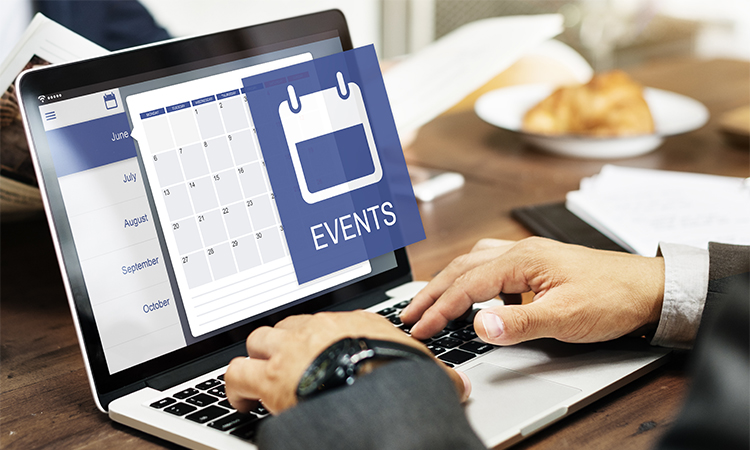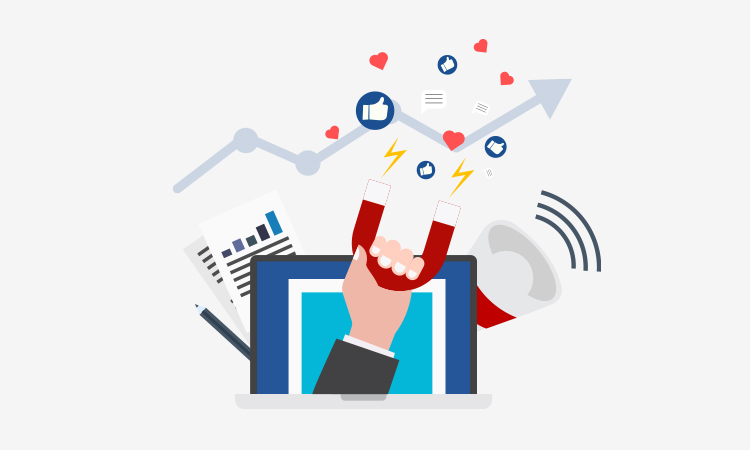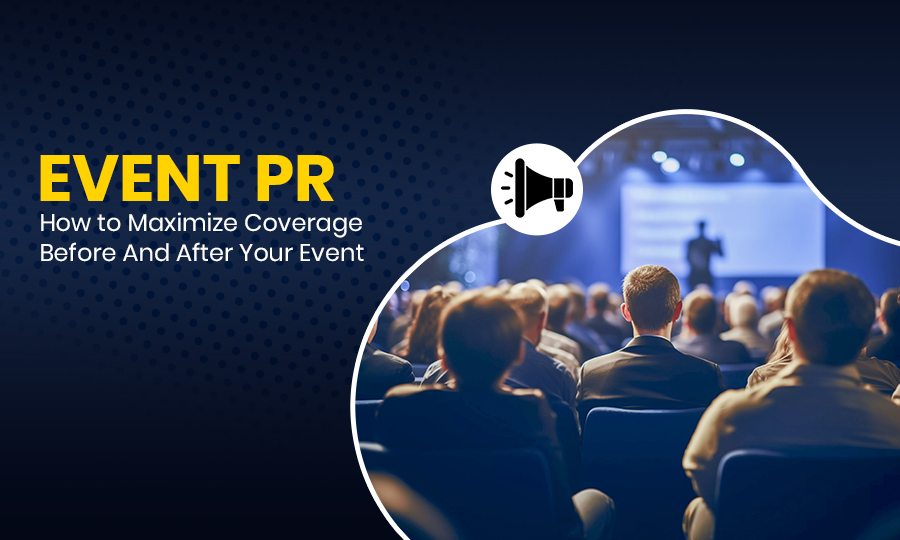Over 92% of consumers trust earned media more than ads, underscoring the power of PR in building trust and reputation. A prominent event PR helps events increase visibility, build relationships, and generate valuable media opportunities.
The strong PR events create excitement, attract the right audiences, and establish faith around a brand. When PR professionals coordinate interaction with a clear plan, many successful events see increases in attendance and increased visibility. An ordinary event can become a memorable experience that attracts public attention through event public relations strategies such as personalized invitations, specific media outreach, and clever storytelling.
Influencers, bloggers, and journalists are constantly searching for new stories, and event public relations promotes your event as the most significant. PR professionals help you to achieve every spotlight for your events.
In this comprehensive blog, you will be learning how you can design press event planning professionally, what the best press kits and how to build long-term relationships with media before the event and after the event what you need to do to optimize results.
What Is Event PR, and Why Is It Important?
Event PR is the strategic process of promoting your event to media outlets and journalists. This practice creates buzz and awareness before, during, and after your event happens. The main objective is to get press coverage that helps you reach people you might not be able to reach with paid ads alone.
The role in public relations strategy works as a bridge between your brand and the public. When you use event PR, one-time events become news stories that get shared on many media outlets. Therefore, your message can reach thousands or millions through articles, social media posts, and broadcast sections.
The Importance of Event PR
- Your brand gets exceptional attention from a wider audience with the help of the right PR strategy. Moreover, the attendees who enjoy your event become brand ambassadors. Media can help your brand reach those who don’t attend your event.
- There are various people who sign up for events when they are advertised before they happen. They are very fond of those events that are covered by renowned writers and journalists or media houses. And here the PR professionals help you to connect with exceptional media houses and get you huge brand recognition.
- Traditional marketing versus event PR shows clear differences in approach and cost. You control the paid channels that marketing uses to send messages. Event PR earns coverage through newsworthy content that journalists choose to share. The earned media is more trustworthy because it comes from outside sources that agree with how important your event is.
- As more news outlets cover your event, your target audience grows by a huge amount. Your promotional budget might reach 5,000 people. A single news article can reach 50,000 or more. When your brand is mentioned in the media, it reaches new people who are interested in your brand.
- You know, when reputable publications write about your event, it automatically increases your brand’s credibility. Media coverage acts as social proof. Readers think, “If this newspaper covered it, this event must be important. These recommendations from outside sources increase reliability more quickly than any advertisement could. Your brand develops prominence in your industry through regular and quality event PR campaigns.
How Do You Define Your PR Event Planning Goals and Target Audience for Better PR Events?

- Set clear objectives for your PR event- You need to understand what you want to accomplish. Your goals could be to release a product, connect with people in your community, or get the media talking. You need to be able to measure specific results for each goal. The main points of the event should be in line with these goals from the start of preparation. A dedicated method makes sure that you can do everything to achieve your goal.
- Then you should identify your target audience demographics and preferences. So you need to do research into who will benefit most from attending your event. Age groups, industries, job titles, and interests are very important factors to choose them. Your audience’s preferences shape everything from venue choice to content format. Moreover, you can send personalized invitations based on this data to increase attendance rates.
- Your PR strategy might focus on thought leadership or market expansion. The event becomes a tool to advance these aims. This makes sure that the message is the same on all channels. If planning events helps you reach your overall PR goals, it will help you build communities even more.
How Do You Create Compelling Press Materials for Event Public Relations Coverage?

Press materials act as the core of successful event PR campaigns. These papers present your story to reporters and media outlets clearly and professionally. You can get coverage or not get publicity if you have strong press materials.
- Press releases constitute the backbone of your media kit. A well-written press release answers the five W’s: who, what, when, where, and why. Your opening paragraph must attract attention. Journalists receive hundreds of pitches daily, so you need to stand out fast. The headline should be newsworthy and specific. So you can include quotes from company leaders or industry experts to increase reliability. The Keep sentences should be short and direct. Most importantly, you need to avoid jargon that confuses readers. Your press release should highlight what makes this event different from previous events in your industry.
- Media kits provide extensive information about your event in one package. PR professionals are dependent on complete media kits to write accurate stories. Moreover, you can add a press release, a company backgrounder, a fact sheet, and high-resolution images. Then you may add speaker biographies if you feature notable presenters. The kit should reflect your brand identity through consistent design elements. Colors, fonts, and logos must match across all materials. This consistency creates a lasting impression on journalists who review your content.
- Fact sheets deliver quick reference points for busy reporters. News outlets like fact sheets because they provide quick information. You need to list key details in bullet format for easy scanning. Don’t forget to include the event date, time, location, and registration information. Then highlight statistics that prove the event’s importance. To make it more authentic, you can add information about past attendance numbers if you hosted previous events. Moreover, you can mention if any sponsors or partners are present.
- Visual assets increase media coverage significantly. High-quality photos attract more attention than text alone. So you can provide images of speakers, venues, or products you plan to showcase. Then you need to create infographics that explain complex data visually. Videos work exceptionally well for generating interest across digital platforms. Marketing teams should create multiple image sizes for different media outlets. Print media needs high-resolution files, while online publications prefer smaller formats. Your brand identity aspects should appear in all visual materials.
- Backgrounders explain the bigger picture behind your event. This document provides context that press releases cannot cover. You need to explain your company’s history and mission. Then you may describe how this event fits into your overall strategy. PR event planning becomes easier when journalists understand your long-term goals. Include trends in your business that make your event current and important. Reporters use backgrounders to write in-depth stories instead of simple statements.
- Media advisories alert journalists to upcoming opportunities. So you can send these documents two weeks before your event. Those reports should be short and focused on logistics. Give details about when you’re available for interviews and photos. Include words like “behind-the-scenes” or “exclusive access”. Marketing teams should coordinate media advisories with broader promotional campaigns. The event’s theme should come through clearly in every advisory you send.
- There are some benefits to digital press tools that actual files don’t have. Put everything on a separate website or in a cloud folder. The information journalists need can be downloaded right away. As new information comes in, add it to the digital kit. Add hashtags and social media names to make it easy for people to share. PR professionals enjoy being able to access things whenever they want. Journalists can read content on their phones with the help of mobile-friendly forms.
- Boilerplates provide consistent company descriptions across all materials. You can write a standard paragraph about your organization. Then you include this text at the bottom of every press release. Update it annually to reflect company growth and changes. The boilerplate reinforces brand identity with each media interaction. Keep it under 100 words for maximum impact.
- Contact information must be prominent in every document. So you can list the PR contact person’s name, email, and phone number. Most importantly, you need to make yourself available for follow-up questions. Quick responses to media inquiries maintain participation and build relationships. Some journalists work on tight deadlines and need answers fast.
Prominent press materials show professionalism and preparation. They show media outlets you value their time. When you provide everything journalists need upfront, you increase your chances of coverage. Event highlights should be easy to find and understand. You need to invest your time to create quality press materials. This work pays off with better relationships with the media and better event PR results that leave a lasting impression on both the press and the attendees.
What Should Your Pre-Event PR Planning Timeline Include?

A well-thought-out schedule will help your event get the most attention and success possible. To plan your event PR, you can follow this step-by-step guide.
- Three to six months before your event, you need to establish foundation elements. You need to express your event goals clearly at this stage. You need to find out which media outlet covers your industry-specific news. Then build a targeted media list with journalist contact details. And start relationships with key reporters early. Then you may draft your initial press materials and gather visual assets. This early preparation creates momentum for generating interest later.
- Two to three months ahead, you should finalize core content. You need to prepare your main press release with interesting angles 74% of PR professionals rely heavily on press releases for media coverage, and 68% of journalists trust press releases the most. Then you should put together a comprehensive media kit that includes all necessary information. You need to design graphics that express your brand message. You have to reach out to prospective speakers or partners. Moreover, you can send save-the-date notices to VIP media contacts. Launch your event website with registration capacity. These steps expand your event’s reach significantly.
- One month before the event, you must speed up promotional campaigns. You can distribute your press release to targeted outlets. Then you may pitch exclusive story angles to top-tier journalists. Then launch social media campaigns across relevant platforms. Send email invitations to your contact database. You need to publish regular updates to maintain engagement with your audience. Furthermore, you can share behind-the-scenes content that builds anticipation. Then you can partner with influencers who can promote your message.
- Two weeks prior, you should complete logistics and confirm details. Then you can follow up with people in the media who said they were interested. Give reporters the extra information they ask for. Then you can add any new information to your media kit. Send emails to registered guests to remind them. Make daily countdown posts for social media. Get press kits and badges ready to hand out on site. Make sure that all of the technical parts work together smoothly.
- One week before, you need to handle final confirmations. Send thorough plans to everyone who is going to be there. Brief talks on how to do a media interview. Set up the press room and get the supplies ready. Make plans for live news on social media sites. Confirm the journalist’s presence and any unique needs. Send email reports with the main points of the last event. Go over your backup plans for possible problems.
This structured timeline transforms chaos into organized success. Each phase builds upon previous work. Your audience receives consistent communication throughout. The event experience begins long before doors open. If you plan your event PR well, you can get the most media coverage and reach all of your goals quickly.
How Do You Maximize Media Coverage During Product Launches and PR Events?

Media coverage transforms ordinary events into memorable moments that reach thousands of people. Your event PR strategy needs careful execution on the day itself to capture maximum attention.
- Develop Dedicated Press Areas- First, you need to set up a specific space where journalists can work comfortably. You need to provide tables, chairs, power outlets, and strong Wi-Fi access. This service shows respect for media professionals’ needs. A well-equipped press room encourages reporters to stay longer and write more detailed stories. You can incorporate your media kit, product samples, and branded materials in this area. You know PR events succeed when journalists have everything, they need at their fingertips.
- Promote Real-Time Content Sharing- You should encourage attendees and media to share content throughout your event. Then you say, create a unique hashtag that people can use easily. And post live updates on social platforms every 30 minutes. Don’t forget to share photos, quotes, and key notifications as they happen. For example, if a CEO makes an important announcement, tweet it immediately. Live content keeps remote audiences engaged and attracts additional media interest. Trade publications often pick up stories from social media trends.
- Manage Spokesperson Availability- You can schedule specific times when company leaders can discuss the product or service with reporters. Brief executives on key messages before interviews start. Make yourself available to coordinate media requests quickly. Some journalists arrive unannounced, so flexibility matters. When leaders engage directly with the press, stories become more authentic and quotable.
- Capture Professional Visual Content- Furthermore, you can hire a photographer and videographer to document everything. High-quality images make stories more popular across platforms. You can provide these documents to media outlets immediately after capture. Many publications prefer ready-to-use visuals over generic stock photos. Video clips work exceptionally well for broadcast media and online news sites.
- Offer Exclusive Access Opportunities- Moreover, you can give select journalists behind-the-scenes tours or early product demonstrations. Exclusive content makes reporters feel valued and special. This strategy can get more media coverage. Thereafter, you need to discuss unique story angles that align with each outlet’s audience. You need to give personalized attention to media that can create stronger relationships and better event PR outcomes that extend beyond the single day.
How Can You Turn One-Time PR Events into Ongoing Media Relationships?
- You need to do a follow-up within 48 hours after your event ends. You can send thank-you notes to journalists who attended. Then you say, “Share additional assets they might find useful for future stories.”
- Then you can create a media contact database from your conference attendees. And you should keep detailed notes about each journalist’s interests and beat. This information helps you pitch relevant stories later.
- Moreover, you can invite media to non-promotional activities throughout the year. Then you can conduct informal coffee meetings or roundtable discussions. These casual interactions build genuine connections without sales pressure.
- However, you can give exclusive access to company news before public announcements. When you think of a journalist first, they like it. That’s how you can grow. Trust and loyalty over time when you get early entry.
- Then you need to connect reporters with your customers for testimonial stories. Your content should be interesting enough to attract new customers.
- The content calendar is very important. It will help you plan regular news releases, expert articles, and trend reports. The communication between PR and media should be consistent. Otherwise, your brand can miss out on any opportunity to be featured in the press.
- Furthermore, you can ask for feedback on what story ideas interest them most. It will help you to understand their audience and content gaps. You can modify future pitches to match your customers’ specific needs and preferences.
How Can Social Media Amplify Your Event PR Strategy?

Social media channels are the most powerful tool for event PR. Without social media promotion, a significant PR event strategy cannot work. So here you can get an idea of how you can use social media engagement to uplift your event PR campaign.
- Increase Pre-Event Excitement
You can begin your social media campaigns at least one month before your event. Then you need to develop teaser posts that hint at what attendees will experience. Share countdown graphics that build anticipation daily. Research shows 54% of event marketers now spend more on social media advertising for event promotion than ever before. You can post announcements about the speakers and articles about the behind the scenes. Reels and tales may be used to provide brief overviews of event preparation. You can get followers to tell you what they are most excited about.
- Create Event-Specific Hashtags
You need to design a unique hashtag that people can remember and spell easily. Your hashtag becomes the central hub where all conversations gather. Moreover, you can urge attendees, sponsors, and speakers to include it in their postings. To interact with others who post about your event, keep an eye on the hashtag. Repost high-quality articles from attendees and respond to their comments. This exchange keeps discussions going and visible.
- Go Live During Your Event
More than eight out of 10 consumers want brands to release more short-form videos, and viewers find short-form videos 2.5 times more engaging than long-form videos. You can view key moments like opening speeches or product demonstrations. Your live coverage reaches people who cannot attend physically. Then you may share real-time highlights through Instagram Stories or Facebook Live. To get quicker results, you can make quotes from speakers immediately after they present. As the energy remains fresh, you need to upload pictures within some time. Moreover, your remote followers feel included in the action when social media posts are posted quickly.
- You Can Make Use of Multiple Platforms Strategically
Different platforms serve different purposes for event PR. LinkedIn works best for professional conferences and B2B events. Instagram excels at visual storytelling through photos and reels. According to the 2025 State of Events Report, 78% of organizers identify in-person events as their organization’s most impactful marketing channel. Facebook reaches broader audiences and facilitates event pages. Twitter helps you join trending conversations quickly. Choose platforms where your target audience spends time. Post content tailored to each platform’s strengths and user expectations.
- Encourage User-Generated Content
- You can ask attendees to share their experiences on their personal accounts. When your user posts about your event, it will bring more accuracy and increase authenticity for our brand.
- To attract more attention, you can run contests that reward the best event photos or videos. Then you may feature attendee content on your official channels.
- This recognition motivates more people to share. User-generated content extends your reach far beyond your follower count. Each share introduces your event to new networks organically.
What Email Campaigns Should You Launch Before Your PR Event?

One of the best strategies for increasing attendance and creating anticipation for your PR event is still using email advertising. A well-planned sequence ensures that your target audience remembers your event.
Save-the-Date Announcements
- You need to send your first email three to four months before the event date. This early notice helps people block their calendars and plan travel if needed. Your message should be short and focus on the event’s core value.
- You need to give your attendees a reason to join. Create very unique content to show them.
- Then you can add a “register interest” button even if registration hasn’t opened yet. This develops your attendee list early.
Registration Launch Emails
- You can open registration with a dedicated announcement email. Then highlight key speakers, sessions, or exclusive opportunities attendees will experience.
- Moreover, you can develop urgency with early-bird pricing or limited seats.
- Make the registration process simple with a clear call-to-action button. Send this email to your entire contact list and segment based on interests.
Countdown Series Messages
To get more attention, you need to launch a countdown sequence starting one month before your event. Send weekly emails that reveal new details each time.
- The fourth week might feature speaker spotlights.
- The third week could showcase event agenda highlights.
- In the second week, you need to share venue information and logistics.
The final week reminds registered attendees about what to bring and how to prepare. Each email can increase future collaboration and participation progressively.
Personalized VIP Invitations
Furthermore, you need to develop separate campaigns for media contacts, industry influencers, and premium guests. These emails need personal touches that acknowledge their specific interests. You need to mention why their attendance matters and what exclusive access they will receive. VIP invitations make recipients feel valued and increase their likelihood of attending and promote your event through their channels.
What Are the Most Effective Post-Event Follow-Up Strategies for Event PR?
The work after your event ends matters just as much as the preparation before it. Post-event follow-up transforms temporary momentum into lasting relationships and tangible results. Many organizers miss opportunities because they fail to capitalize on the energy created during their PR events.
Your follow-up strategy should begin within the first 24 to 48 hours while the event remains fresh in everyone’s mind. This timing maximizes response rates and keeps conversations active.
Key Post-Event Follow-Up Strategies
- Thank-you emails to all attendees create immediate goodwill. Your message should express genuine appreciation for their participation. You can give a short summary of the event with the most important things they remember. Then you need to send some personalized texts based on the events they went to or the contacts they made.
- Your whole event should be recorded clearly. And then you can send them to those who cannot attend. It will make your event more memorable and show attendees that their presence was valued. Then you can host these assets on your website to drive traffic long after the event concludes. This will also help promote future events to a wider audience.
- Survey distribution provides valuable feedback for future improvements. Your attendees offer honest insights about what worked well and what needs to change. You can make all surveys are short, with five to seven focused questions. Offer incentives like exclusive content or early-bird discounts for next year’s event. However, you can give open-ended questions to gather more detailed feedback.
- Social media recap posts maintain engagement across digital channels. Then you may share attendee testimonials, speaker quotes, and event statistics. Tag participants to encourage shares and comments.
- You can ask your customers to make a reel of your events. It will help you to reach a wider audience
What Tools and Technologies Support Event PR and Media Outreach?
The right technology stack makes your event PR more efficient and measurable. Modern tools automate repetitive tasks so you can focus on building meaningful media relationships. Your choice of platforms directly impacts how effectively you manage campaigns and track results.
Essential Tools for Event PR Success
- Media monitoring platforms track your brand mentions across news outlets and social channels. Tools like Meltwater, Cision, and Mention scan thousands of sources daily. You can set up alerts for your event name, hashtags, and key speakers. These platforms measure sentiment to show whether coverage appears positive or negative. Export reports to share results with stakeholders.
- CRM systems organize your media contacts and communication history. Platforms like HubSpot or Salesforce store journalist preferences and past interactions. You may tag your contacts by beat, publication, and engagement level. Schedule follow-up reminders so no relationship falls through the cracks. You should track which pitches led to actual coverage.
- Email automation tools can streamline your outreach campaigns. Mailchimp, Constant Contact, and SendGrid let you create segmented lists. You need to create templates that maintain brand consistency across messages. Schedule emails to send at optimal times based on audience behavior. Then you can analyse open rates and click-throughs to refine your approach.
- Social media management platforms coordinate posts across multiple channels. Hootsuite, Buffer, and Sprout Social allow you to schedule content weeks in advance. You should monitor comments and mentions from one dashboard. Then you may analyze which posts drive the most engagement. To get better results, you can collaborate with team members on content approval.
- Event management software handles registration and attendee communication. Eventbrite, Cvent, and Bizzabo integrate email campaigns with ticket sales. So, you can create custom registration forms that capture useful data. Then send automated confirmations and reminders to register guests.
- Analytics tools measure your overall event PR performance. Google Analytics tracks website traffic from media coverage. Social analytics show which content resonates most with audiences. You need to connect data sources to see the complete picture of your event’s impact and return on investment.
Last Words Before We Conclude
Event PR is the most essential strategy for your brand to flourish. There are various event planning techniques required to make an event successful. However, professional PR services can guide you to plan your event PR better. They can help you create a strong media presence, generate buzz, and attract the right audience to your event. With their expertise, you can ensure that your brand gets the attention and recognition it deserves.

